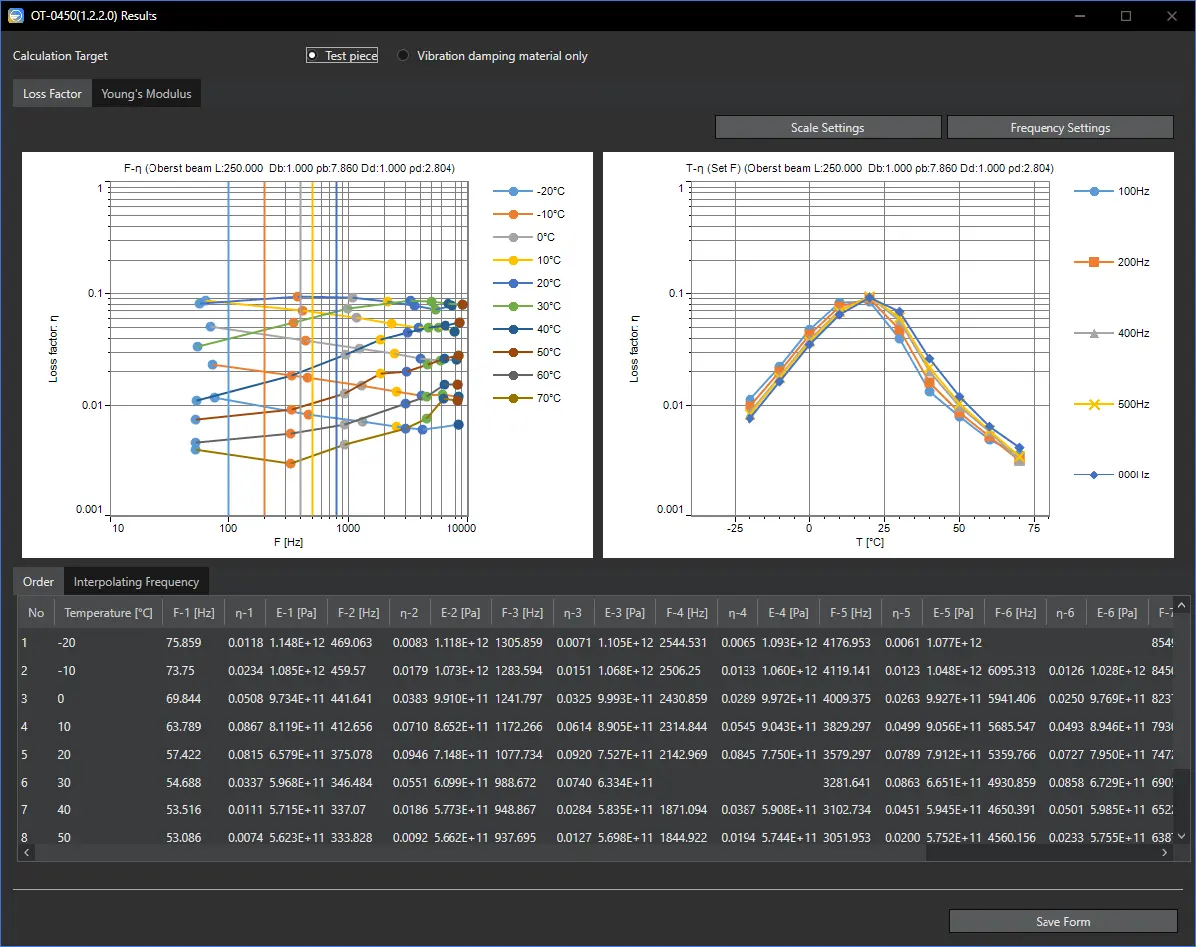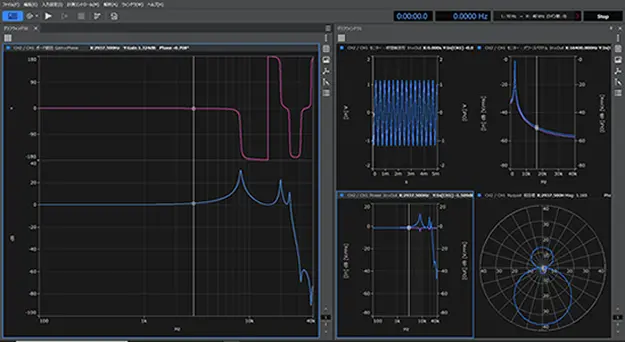OS-4100/DS-5000
Loss Factor Calculation Tool OT-0450
New
Calculating the loss factor and Young's modulus (longitudinal modulus of elasticity) of a damping material based on the standard, JIS K7391 in Japan for measurement method

The loss factor is one of the indices used to evaluate vibration-damping property in the fields of mechanical vibration and polymer materials.
Attaching the damping material with a large loss factor allows to reduce vibration and radiated sound.
This option allows to calculate the loss factor and Young's modulus of a damping material itself from the measurement results of a multi-layered test piece (a material attached to a base or a base sandwiched with materials)
measured using the frequency response measurement software (OS-4100), and clarifies the vibration-damping property of damping materials.
Features
Supporting the cantilever method and central exciting method
These methods, which correspond to JIS K7391 in Japan, are methods to obtain the loss factor by the half power bandwidth method from the peak of the frequency response function (mechanical impedance (force/speed) or mobility (speed/force)) obtained by forcibly vibrating a rectangular test piece.
Supporting the methods using sandwiched beam, modified oberst beam
It is also possible to calculate the loss factor and Young's modulus for test pieces in which a damping material is sandwiched between base materials on both sides, such as damping steel plates, or damping materials are attached to both sides of a base material.
Displaying the results for different temperature conditions in one graph
Damping materials generally have temperature characteristics in addition to frequency characteristics.
In temperature tests using a thermostatic chamber, the results of measurements at multiple temperatures can be overlaid.
Measurement system
This method measures the loss factor by fixing one end of the test piece and vibrating the other free end.
System configurations

The graph above is an image of the measured frequency response function.
Image of test piece

Frequency response measurement software OS-4100
For details
The OS-4100 is dedicated software that can measure the frequency characteristic of various objects with high precision and high speed, such as vibration characteristics of mechanical structures, acoustic characteristics of speakers, motor control characteristics, servo analysis, coupling response characteristics, and battery impedance characteristics.
The followings are the results of measuring a oberst beam with damping material attached to an iron base using the central excitation method.
System configurations

The graph above is an image of the measured frequency response function.
Image of test piece

Frequency response measurement software OS-4100
For details
The OS-4100 is dedicated software that can measure the frequency characteristic of various objects with high precision and high speed, such as vibration characteristics of mechanical structures, acoustic characteristics of speakers, motor control characteristics, servo analysis, coupling response characteristics, and battery impedance characteristics.
Measurement examples
Frequency response function measurement result screen on the OS-4100

Entering measurement conditions on the OT-0450

Calculating results
Loss factor

Young's modulus

Specifications
File format
| Import file format |
CSV (damping ratio list data output by OS-4100) |
|---|---|
| Export file format | XLSX (report file) |
Related standard
- JIS K7391:2008 Test methods for vibration-damping property in damped composite beam of unconstrained type
- JIS G0602:1993 Test methods for vibration-damping property in laminated damping steel sheets of constrained type
Related information
Revised: 2024/07/10

